How To Rehab A Single Runway Airport With Commercial Service
When it came fourth dimension for St. Pete-Clearwater International Airport (PIE) to rehab its primary air carrier track, closing the airfield was not an option. Officials needed a program to proceed commercial aircraft flying in and out of the Florida airport.
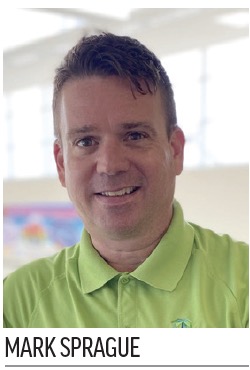 "Nosotros couldn't practise all the work at night," explains PIE Deputy Manager Mark Sprague. "We had to figure out how to let the contractor work on the runway during the day."
"Nosotros couldn't practise all the work at night," explains PIE Deputy Manager Mark Sprague. "We had to figure out how to let the contractor work on the runway during the day."
Airport officials brainstormed with consulting engineer Kimley-Horn and other project partners to devise a way to consummate most of the piece of work during daytime hours. The strategy temporarily shifted commercial traffic onto Runway 4-22, the full general aviation runway, to provide construction crews with 24/vii access to meliorate 18-36, the airport's 9,730-foot primary track.
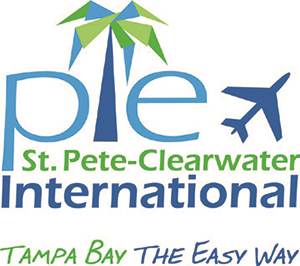 facts&figures
facts&figures
Project:Rails Rehabilitation
Location: St. Pete-Clearwater (FL) Int'l Airdrome
Scope: Combination of forge overlays, mill overlays & full-depth reconstruction for 9,730-ft. principal runway
Ancillary Projects:Improved airfield lighting & navigational aids; new approach lighting system; updated electrical system
Strategy:Upgrade crosswind rails for commercial traffic; shift airline ops to crosswind runway while workers rehab primary runway
Approximate Cost:$24.5 million
Funding:FAA, $xix.75 one thousand thousand; airport, $iii.85 1000000; FL Dept. of Transportation, $900,000
Planning & Design:2019
Construction:March 2020-March 2021
Consulting Engineer: Kimley-Horn & Associates
Resident Project Representative:AECOM
Electrical Subconsultant:Arora Engineers
Electrical Contractor:Precision Approach LLC
Pavement Contractor:Ajax Paving Industries
Airfield Lighting:ADB SAFEGATE
Bases:Jaquith Industries
Key Benefits:Supports continued traffic grow; upgrades to secondary runway will simplify time to come piece of work on master rail; new lighting volition reduce energy costs & labor needs
"We could expedite the entire process and compress the timeframe from 24 months to 12 months. And the piece of work was both achievable and safe," says Sprague.
Designing the programme was one affair; but making information technology happen was another. The airport had to extend Track 4-22 to a workable length of 6,000 anxiety and work through condom-related issues with the FAA. Information technology also had to apply temporary markings and install precision approach path indicators (PAPIs) so airlines could use the runway.
"It is unprecedented for an airport to switch commercial traffic to a general aviation runway," says Paul Piro, pb designer for Kimley-Horn.
PIE Airport Engineer Scott Yarley agrees almost the strategic nature of the programme. "This is 1 of those projects where shut coordination, and some operational sacrifice, was needed to complete construction with minimal impacts to all. The stakeholders all worked together to make this projection a success."
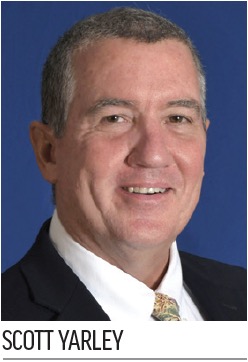
Specifically, Yarley credits the FAA Orlando Airdrome Commune Role; PIE Engineering, Operations and Facilities; Kimley-Horn; AECOM; Ajax Paving Industries; Allegiant Air; the Coast Guard; and other airdrome tenants for making the unusual strategy piece of work.
Time for Improvements
Officials explain that Runway xviii-36 sorely needed the recently completed $24.one 1000000 rehabilitation. The last time it had been repaved was 2009. Though shy of the average 20-year lifespan, longitudinal cracking, raveling and weathering riddled the track, making repairs necessary.
"In Florida, oxidation and sunshine deteriorates pavement faster," Sprague explains.
The airdrome abides by the Florida Department of Transportation Pavement Direction Program, which classifies pavement distress to determine when runways need rehabilitation. Technicians appraise the pavement condition on a scale of 0 and 100, with thirty or lower indicating a need for repair or replacement.
Visual inspections documented distress and earned PIE's pavement a depression classification (as low as 52). More than 100 core samples and 20 borings indicated that some areas of the runway needed forge or mill overlays, while others would require total-depth reconstruction. "About thirty% of the project was full-depth reconstruction, the rest was mill-and-overlay," notes Sprague.
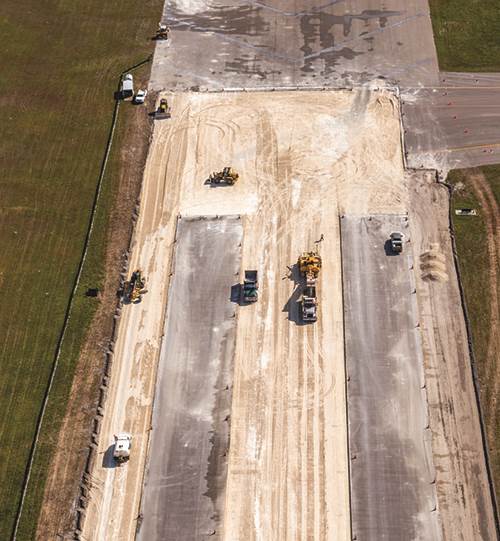
On the positive side, PIE's low pavement condition classification freed upwards local, country and federal funds for the project. FAA earmarked $19.75 one thousand thousand, Florida Department of Transportation contributed $900,000, and the airport committed $3.43 million. The funds covered milling and overlay of existing asphalt pavement, reconstruction of the keel area, new centerline line and touchdown zone lighting, shoulder expansion and a new border lighting arrangement.
Recommendation for repairs came in 2019, only as PIE finished its ninth sequent year of traffic growth. The airport was on pace to break its record of over two.2 meg passengers in 2020 when COVID-19 disrupted the Florida travel market and entire airline industry. The associated lull, nonetheless, made March 2020 the perfect time for crews to begin work on PIE's airfield projects.
"The pavement is our greatest asset," says Sprague. "If we don't have rubber pavements, nosotros are out of business."
Equally planned, PIE'due south improved commercial runway opened this March. And 2021 passenger traffic is picking up steam as hoped. In April, Dominicus State Airlines appear plans to brainstorm scheduled service at PIE after operating charters there for years. Iv flights per week between PIE and Minneapolis-St. Paul International are expected to begin this fall.
Out-of-the-Box Thinking
If crews had been express to working around the airport's regular operating hours, engineers estimate that the runway project would accept taken twice as long. And then Kimley-Horn developed a construction plan that provided workers with around-the-clock admission to the project site.
The construction plan chosen for alternating closures of Rail eighteen-36 for 12 months and rolling shifts of air carrier flying operations to the shorter crosswind runway, 4-22. But before work could begin, the project team needed FAA blessing.
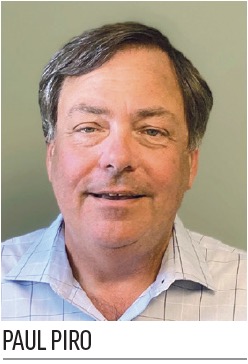
"The secondary rail was not prepare up to receive commercial traffic," Piro explains. "No one has ever shifted commercial traffic to a reliever rail. We had to retrieve exterior the box to become the work done."
First, PIE planners talked to air carriers, corporate pilots and U.S. Coast Guard officials to learn what they would need for takeoffs and landings. The common requirement was at least six,000 anxiety of runway. This meant the airdrome needed to extend Rail four-22 by 100 anxiety earlier construction crews could start work on the primary runway.
Next, the aerodrome hosted an FAA Safety Risk Assessment Panel consisting of representatives from the Air Traffic Command Belfry, FAA Tech Ops, the airport, air carriers, project consultants, the Air National Guard and the U.South. Coast Baby-sit. The panel evaluated the proposed improvements, identified risks and discussed projection phasing.
In the end, the project had eight phases. The enabling phase extended Runway 4-22 past 100 anxiety to provide the 6,000 feet needed for commercial aircraft. To address other safety concerns, the drome staff worked with FAA to implement a temporary modification of standards for rails concord short markings. In addition, information technology provided total-time advice with the air traffic control tower to monitor vehicle traffic moving through Runway 4-22 safety areas.
The airport also had to install and flying check temporary navigational aids in two locations before work could begin on Runway xviii-36. "Without navigational aids installed and approved past the FAA, we could not shift air traffic," Piro says.
During the first phase, the team moved thresholds on the primary runway equally far north as possible to provide a 6,000-human foot runway mark on the n. This freed space in the southern part of the runway.
"The offset phase of project happened in one night," notes Piro. "With multiple people on site, we obliterated some track markings and installed new ones. When the sunday came up, nosotros moved all activity to the north, freeing the south portion for construction. When crews finished the southward end, they moved operations to the south and worked on the northward portion of the rail."
This type of work schedule kept the airport operational throughout the project, except for a few temporary closures when crews grooved and applied new markings to the "bullseye" where the two runways intersect.
"Whatsoever work we did at that place took a lot of coordination because it shut downward the drome," Sprague says. "When I say shut down, I mean no one could accept off or state. We even warned disquisitional medical aircraft to make other arrangements, including the U.S. Coast Guard operations."
Keep It Downward
Shifting traffic to the reliever runway prompted PIE to proactively step upwardly its public relations efforts. Maintaining open communications with neighbors became fifty-fifty more than important than usual as changing flight paths affected areas of Clearwater and half dozen other nearby communities.
The airport launched an 18-calendar month entrada to proceed businesses and residents informed nigh when changes would occur and how long they were expected to terminal. Press releases detailing the project included pictures and maps.
"Y'all will always have people who are not beholden of actress planes flying overhead, but we lessened negative feelings by keeping people informed," says Sprague. "They knew it was temporary."
The drome too worked to engineer out noise issues past phasing the project to minimize use of Runway 4-22.
Plough Up the Lights
In addition to improving pavement, the project upgraded airfield lighting. Arora Engineers designed and provided construction assistants back up of the associated electrical engineering science, lighting and navigational aids.
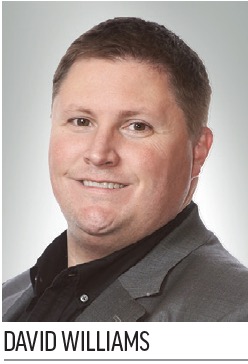 During the project, crews replaced traditional centerline and touchdown zone lights with LED fixtures, and upgraded loftier-intensity border lights with new incandescent fixtures. "LEDs were not AIP-canonical at the time of the grant," notes David Williams, exercise lead for Airfield Electric at Arora Engineers.
During the project, crews replaced traditional centerline and touchdown zone lights with LED fixtures, and upgraded loftier-intensity border lights with new incandescent fixtures. "LEDs were not AIP-canonical at the time of the grant," notes David Williams, exercise lead for Airfield Electric at Arora Engineers.
But LEDs burn brighter for pilots and reduce maintenance for airports, adds Piro. "They exercise not burn out as fast, so you don't have to supercede them as oftentimes," he explains.
Aerodrome maintenance personnel will still need to deport bolt torque checks and clean lenses, but the new LEDs will reduce time spent replacing lamps.
The aerodrome also replaced centerline and touchdown zone 30-watt constant current regulators with 10-kW regulators, which volition further trim free energy apply. "Only irresolute out lights doesn't equate to free energy savings," explains Williams. "If y'all put in 30-kW regulators and you only need 10-kW regulators, you may still draw upwardly to thirty kW. You must resize the regulators to attain maximum energy savings. With LEDs and the right regulators, we typically run across an free energy savings of more than 50%."

He adds that PIE is ane of only 31 airports and one of only 49 approaches in the United States that have runways with displaced thresholds greater than 700 feet and centerline lights without high-intensity approach lighting systems. "This awarding required coordination with PIE Ops, their air carrier Allegiant's OpSpecs and the FAA," Williams remarks.
The airport, Arora and Kimley-Horn worked through challenges together, adds Williams. "This project was a success because of the connected communication betwixt airport staff, designers and structure staff," he says. "It provided PIE with updated airfield lighting products and infrastructure that volition help them go along to ameliorate and maintain their airfield."
From a larger perspective, contempo improvements to the crosswind runway are expected to pay dividends years downwards the road. "This project will simplify future rehabilitations when the current work nears the end of its service life," notes Piro.
Source: https://airportimprovement.com/article/st-pete-clearwater-int-l-expedites-rehab-project-shifting-commercial-traffic-crosswind-runway
Posted by: williamswifigh75.blogspot.com


0 Response to "How To Rehab A Single Runway Airport With Commercial Service"
Post a Comment